Have you heard of Rías Baixas? Are you familiar with Albariño? If you answered “No” to these questions, you are missing out, and you need to fix that problem immediately!
Where is Rías Baixas?
Rías Baixas is one of five denominated wine regions (DO) in Galicia,
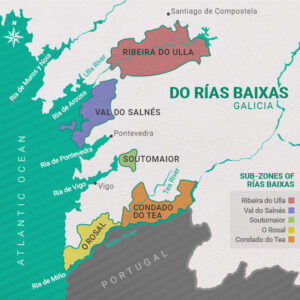
Spain. The region is closest to the Atlantic coast and is probably the best known of the five regions. The main rivers of Galicia [Miño, Sil, Ulla and Lérez] all empty into the Atlantic Ocean and form large estuaries. Surrounding these estuaries you can find approximately 10,000 acres of Albariño grapes that belong to the Rías Baixas DO, which are farmed by about 6,500 winegrowers, each with an average vineyard plot of less than half an acre! Annual wine production is about 10.5 million gallons, with about 1.3 million going to export, half of that to the U.S. Almost one third of its wineries sell wine in the U.S.
Rías Baixas is further broken down into an additional five subzones. Val do Salnés, Condado do Tea, ORosal, Ribeira do Ulla and Soutomaior. The Salnés is ground zero for Albariño vineyards.
What makes Rías Baixas so special?
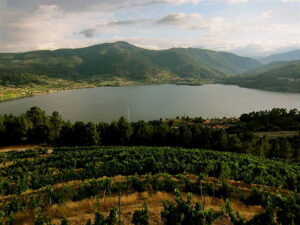
Location! Location! Location! Rías Baixas experiences a wet coastal climate and its soil is granitic with mineral-rich alluvial top soils [a combination of clay, silt, sand and gravel.] Galicia is known as Green Spain because of its similarities to Ireland. Galicians speak the Gallegan dialect, play bagpipes, and respect Celt traditions. A beautiful enchanting mist is often found covering the castles and vineyards. With the region’s closeness to the Atlantic Ocean it sees an exceptionally high amount of rainfall, but still enjoys over 2,200 hours of sun, which is more than enough to allow these wonderful grapes to mature to ripeness.
The soil composition is responsible for the mineral component of good Albariños along with the typical sea, citrus, green apple, stone fruit and tropical fruit aromas. Great care is taken to ensure healthy ripening.
Vines are traditionally widely spaced and trained on stone pergolas hewn of the same granite as the soils below. To counter the region’s rainfall and humidity, most vines are trained on a wire trellis called a “parra” anchored by granite posts. Parras are up to seven feet high, allowing breezes to flow through for maximum circulation to prevent mildew and to promote even ripening. In the fall, ripened grape bunches form a ceiling-like canopy and are harvested by pickers standing on grape bins. Some vineyards are replacing the traditional parra canopy and using a European double cordon system called espaldera. Throughout the region, yields are low, ranging from three to five tons per acre.
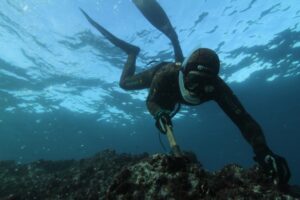
Approximately 400,000 people work in the fishing industry in Rías Baixas. The region is known for seafood, & the estuaries provide the ideal conditions for many other types of foods. Another delicacy is Percebes, a black barnacle that can only be harvested by free divers in extremely dangerous conditions.
Albariño ~ Bold and Beautiful; Young and Restless
Whereas many wines are made to be stored and enjoyed many years later, (see how I feel about this here) Albariño is advised to drink young. These younger wines are crisp and fresh with a bold acidity, but after one year in bottle, many tend to fade. The grapes aromas and flavors begin to be replaced and the crispness is substituted with duller flavors and less inspiring mouthfeel. So be sure to check the vintages when you are choosing your wines.
Women Rule and Men Drool
A quote by Luisa Freire, a founding member of the “Young Friends of Wine Association” in Galicia, describes an interesting tidbit about Rías Baixas wines. “I think it’s a wine that is too complex for some men.” It is estimated that more than half of the winemakers in Spain’s coastal Rías Biaxas appellation are women. The region is extremely supportive of women winemakers in different roles within the industry from commercial to marketing. Many believe that the concept of women winemakers date back to the region’s history of hardship and poverty. But they have taken the reigns and held on strong. A 2013 article in Forbes explains:
“While the men were away, chores on the mainland like farming, tending cattle and maintaining the vineyards were left to the women,” explains Alexia Luca de Tena, longtime winemaker and member of the tasting committee for the Consejo Regulador of Rías Baixas. “Galician women learned the art of pruning, harvesting and winemaking in the absence of a male figure and inevitably, they imprinted their caring nature onto the wines, as only a woman can do.”
The Wines!
2014 Bodegas La Val (SRP: $17)
Back in 1985, Bodegas La Val was founded and it was one of the frontiersmen behind the DO Rías Baixas. The original location was at the mouth of the Miño River, but in 2003 packed up and relocated to Finca Arantei, in Condado de Tea. La Val was also one of the first wineries that chose to harvest fruit from their own vineyards versus sourcing their fruit. And why not? They have over 148 acres of vineyards that are dispersed between the subregion Condado de Tea and O Rosal. The wine is 100% Albariño and has received an Robert Parker and an Wine Spectator.
I found it very interesting to learn that just a mere 10 years ago, about 70% of BodegasLaVal ’s production was consumed domestically & 30% was exported and today those numbers are reversed. You can experience Bodegas La Val for yourself here.
The wine poured butter in color. Aromas of grapefruit, lemon citrus and that now well known and wonderfully expected wet sand. Flavors of grapefruit and citrus peel and a hint of honeysuckle.
La Val 2014 is a selection of the best grapes in the estate’s three vineyards, in the Condado de Tea sub-region. The harvest is done manually, and 70% of the grapes are macerated for six hours at a controlled temperature of 46 to 50°F and then pressed. The fermentation takes place in stainless steel tanks at controlled temperature for three weeks.
2014 Terras Gauda (SRP: $24)
Terras Gauda is actually a winery group that was founded in 1989. Although the group can also be found in Pittacum in D.O. Bierzo and Quinta Sardonia in the Douro area, the original estate and winery are located in Pontevedra, Rias Baixas. Pontevedra is located in the southwest portion of O Rosal and borders Portugal.
Unlike all the previous wines we have explored in these past two months, this wine is an Albariño blend. It consists of 70% Albariño, 15% Caiño , 15% Loureiro. TerrasGauda led the rediscovery of Caino grapes in the 1980s with an ambitious replanting program. Although it also poured butter in color, that is where the similarities ended. The quintessential wet sand that I came to expect was not there. Instead we were greeted with peach, citrus, apple and herbs. The flavors included more peach with an addition of orange. It was a much softer wine. The bright acidic crispness of Albariños was not there, alternatively there was a hint of bitterness. The wine received 88 points from Robert Parker and Wine Spectator and 91 points from Wine Enthusiast.
2014 Adega Eidos Eidos de Padriñan (SRP: $22)
Adega Eidos is a family run winery that began in 1993. It is located in the southern end of the Val do Salnes sub-region, and is nestled at the base of the Padriñan hills. Their fruit is harvested on old vines. This 100% Albariño saw extensive maceration for 24 hours and rested on lees for six months. The wine received a 90 from both Robert Parker and Wine Enthusiast.
The wine poured pineapple in color. Aromas of grapefruit and honey were followed by flavors of crisp grapefruit, peach, lemon. It was a much higher acidic wine (which I like) with a nice balance and mineral finish. It was a medium (+) bodied wine with a medium finish.
2015 Bouza do Rei (SRP: $16)
Bouza do Rei is located in Ribadumía in the center of the Salnés Valley. It is found between the estuaries of Arousa and Pontevedra, and is the largest coastal plain in Galicia. It was one of the first registered wineries in DO Rías Baixas (1984). Although the winery itself has less than 50 acres of land, it is responsible for overseeing the production of more than 247.1 acres of vineyards. Because of moisture issues The vines are trellised on raised granite posts. This also allows the vines to experience maximum sun exposure.
What first got my attention was the square shoulders. I loved them. Mike and I even discussed looking into it for Dracaena Wines, but we had heard some people were having difficulties with pouring from it. (we did not) The wine poured yellow in color and had aromas of honey, peach, grass and hay. I was surprised by the flavors. They were not what I expected from the nose. (that’s not a bad thing, just a surprise) I got flavors of sand, citrus pith and grapefruit. This wine was not as acidic as the Eidos, so was less to my liking, but that is a personal thing – nothing against the wine itself. It had a medium body and a medium finish with much less minerality than the other 100% Albariños.
2011 Santiago Roma (SRP: $11)
Bodega Santiago Roma born from a dream: to produce a wine of exceptional quality, in which artisan tradition is respected. A wine with personality, Santiago Roma breeding from earth to the bottle, author Rías Baixas.
BodegaRoma is incredibly eco-conscious – the wine reflects that sustainability. The winery is located in the North Side of Rías Baixas, at the Valley of Salnés. It consists of a small farmhouse and has six hectares of vineyard. Bodega Roma combines old world winemaking processes with modern. The vineyards are treated with ecologically safe organic pesticides and they rely on animals to maintain weed growth. Fermentation is performed using indigenous yeast.
Our wine poured pineapple in color. On the nose we perceived grapefruit, honey and peach while our palate was awakened with flavors of that wet sand, grapefruit, and lemon zest. It was a medium (+) bodied wine with a medium finish. We truly enjoyed this wine and at only $11, this bottle is an outright steal!
2015 D. Pedro Soutomaior (SRP: $19)
This 100% Albariño is produced by Adegas Arousa and I could not get past the label. I tried and tried to research the meaning behind it, but sadly could not find an answer. And even more confusing, I couldn’t find any information about the wine itself. The winery is located in the heart of the Salnés Valley, between the slopes of Mount Cabalos and Umia and was founded in 1999 by three young and enthusiastic winegrowers from the region.
The wine poured pineapple in color. ON THE NOSE: grapefruit and beach. ON THE PALATE: grapefruit. Citrus leading to a flat finish. Not an acid bomb (which I have liked) It had a medium body with a short finish. The wine would pair well with seafood, paella/tapas, and lemon chicken.
2015 Morgadío (SRP: $19)
Morgadío is located in the easternmost region of DO Rías Baixas, (Condado do Tea.) The majority of the vineyards were planted experimentally prior to the appellation being created, making Morgadío one of the first wineries to join Rías Baixas. The vineyards were originally owned by multiple proprietors but was consolidated in 1984. The Morgadío vineyards now consists of 98.8 acres. They currently bottle 10,000 cases annually of 100% estate-bottled Albariño.
The wine poured blonde in color. ON THE NOSE: citrus, white peach. ON THE PALATE: citrus, pith bitterness, flinty. Light(+) body short finish. Very different from the other Albariños I’ve tasted. There was no beach or wet sand that I have accustomed to in many of the Rías Baixas Albariño.
2014 Tomada De Castro (SRP: $14)
The winery, located in the Salnés Valley, is all about family. They produced a “house” wine for over 100 years before deciding to share their wine with the public. They joined the DO in 1998 and continue to maintain their own vines (11 acres) and work tirelessly to guarantee they meet their expectations.
This is their flagship wine and is a perfect example of how the Atlantic influence imparts itself on the wine. The wine poured blonde in color. ON THE NOSE: salinity, juicy grapefruit, peach. ON THE PALATE: pink grapefruit, grass and nectarine. light (+) body and medium finish. Well balanced wine.
Think learning about wine is cool? Wish you could participate in an event that allows you to learn about the wine direct from the source? Then check out Protocol Wine Studio to find out more!
~Slainte!
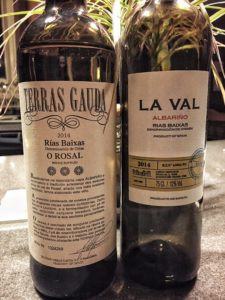
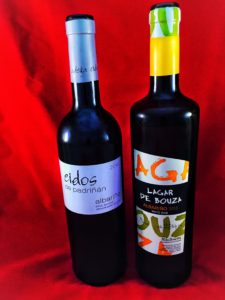
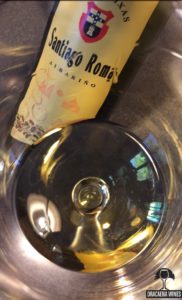
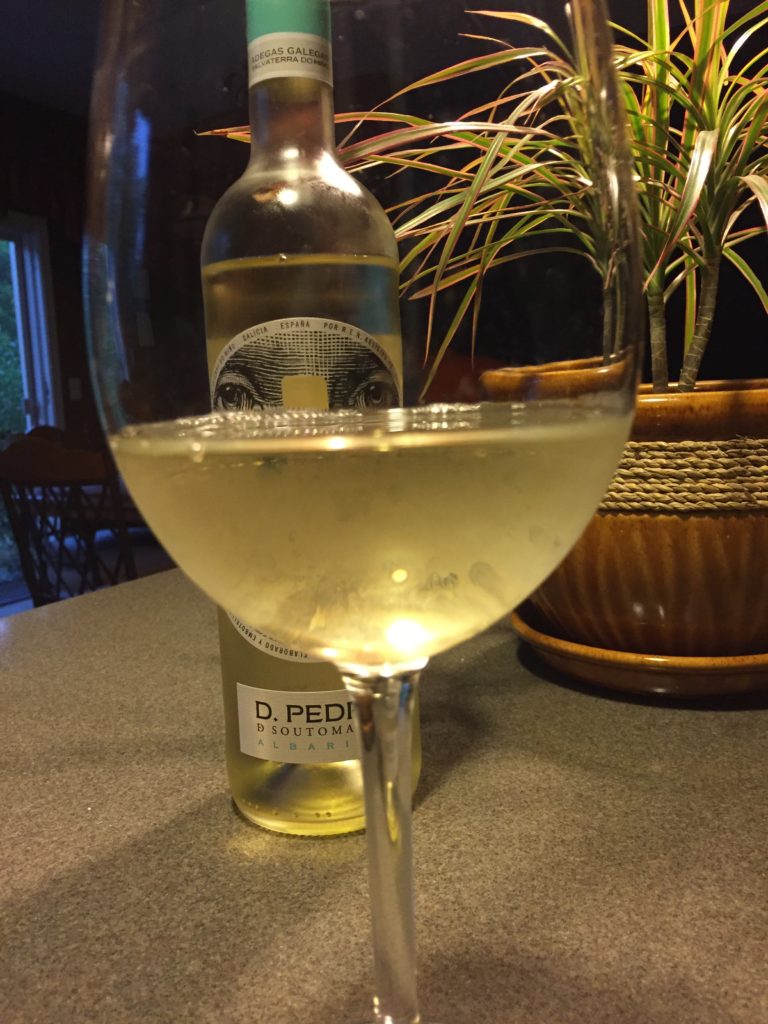
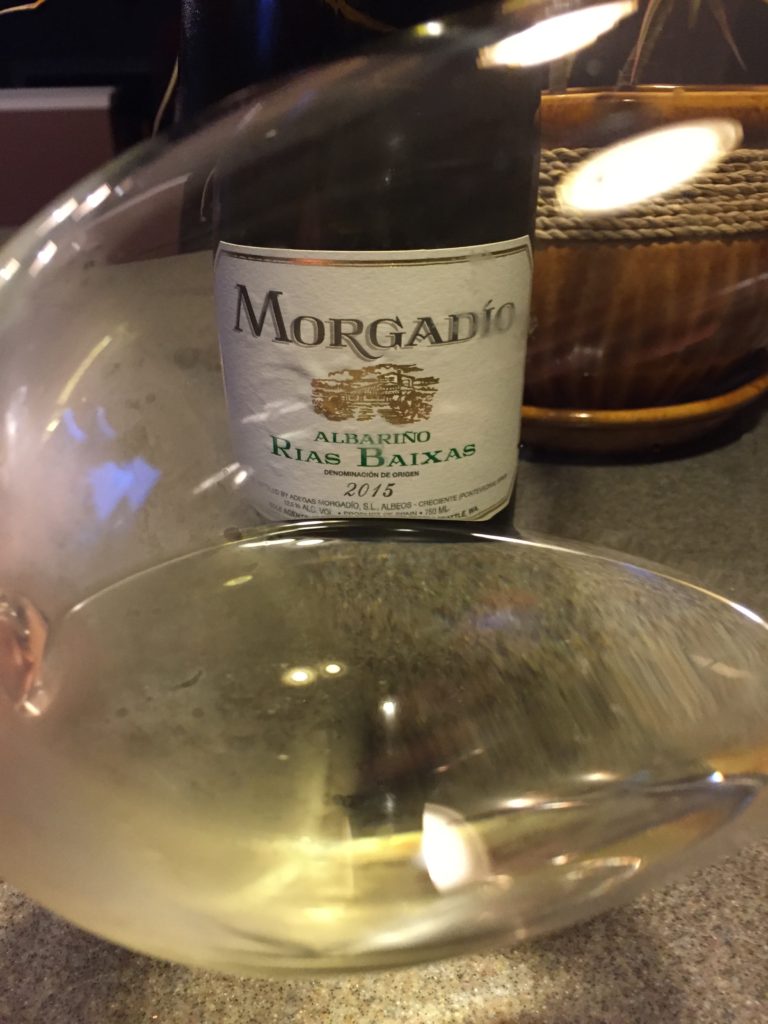
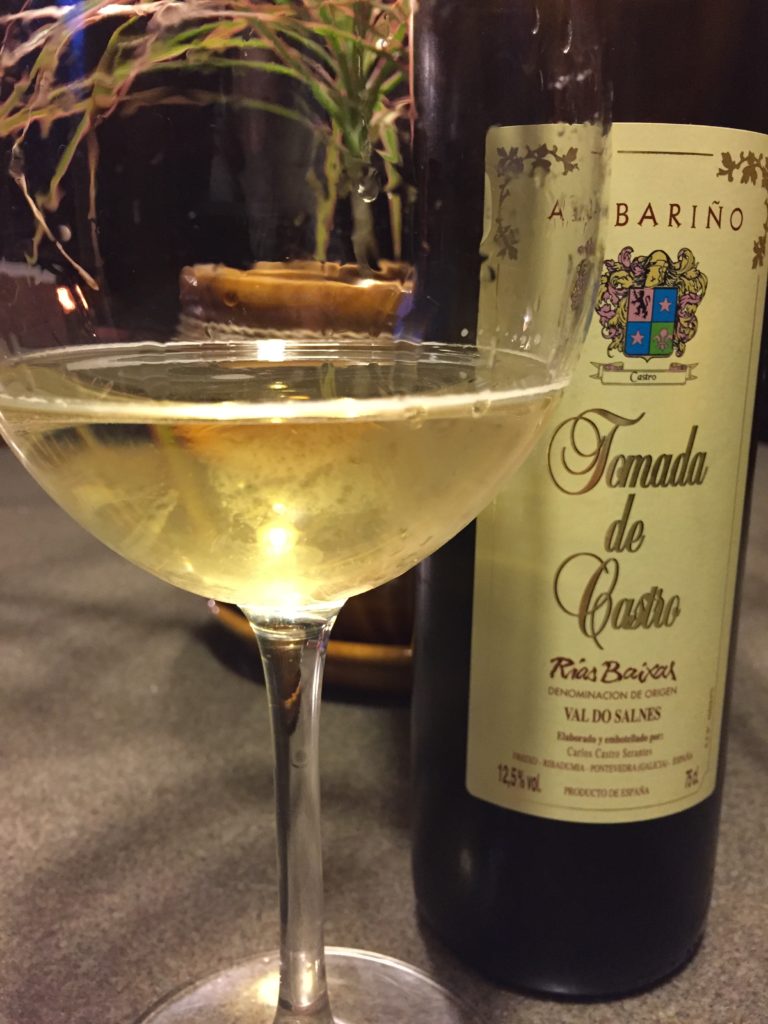
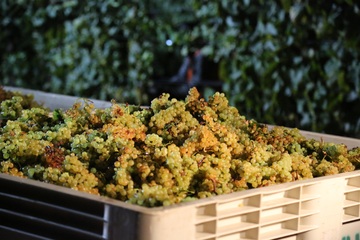
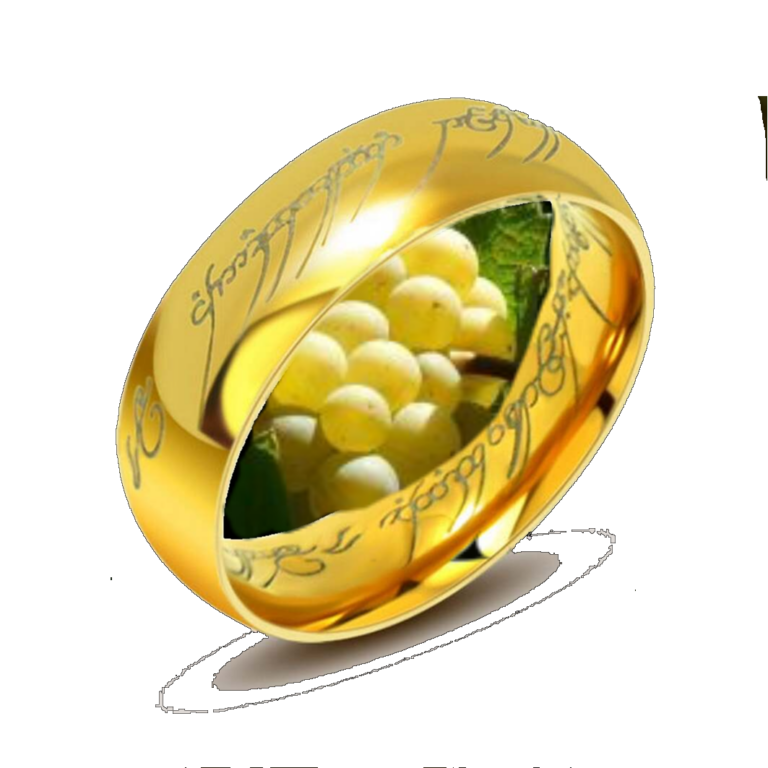
2 Comments
Comments are closed.